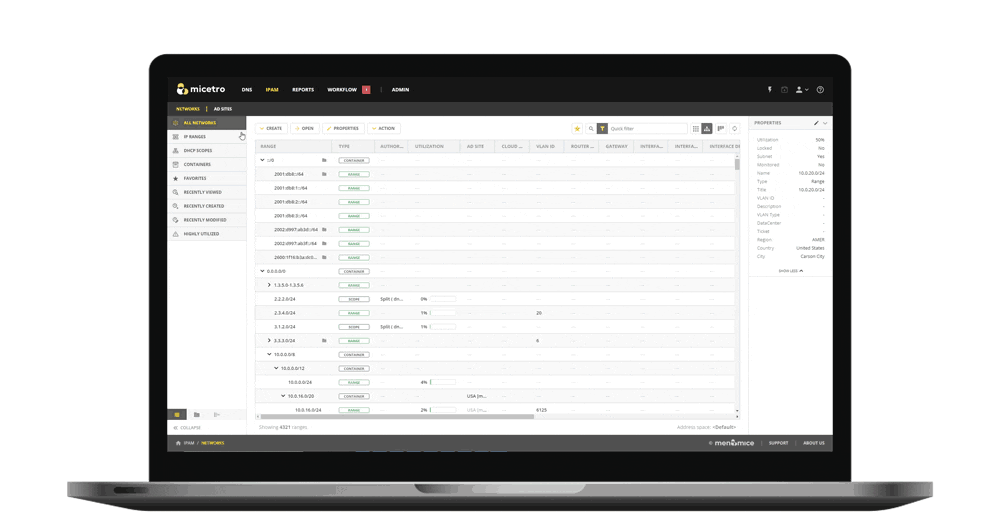IP Conflicts
IP address conflicts can cause serious outages across production systems that result in revenue loss and reduced productivity. These conflicts usually arise from human-inputted entries and manual steps. Although some protocols have methods for the detection of these IP conflicts, they can not mitigate against persistent and statically configured entries. At a routing level, subnet misconfiguration can impact groups of hosts to whole regions of services.
Whether it's server subnets, routing table entries, or user access edges, IP address conflicts prevent traffic from leaving or reaching the correct assets. Overlaps and conflicts cause confusion and result in ARP, MAC/CAM, and routing tables being polluted. Although there are some basic duplicate IP address detection functions in ARP, they do not mitigate all issues. DHCPv6 and SLAAC also have DAD (Duplicate IP Address Detection) mechanisms that use NDP (Neighbour Discovery Protocol), but the configuration that controls dynamic allocations can be repeatedly given incorrect allocations.

How to resolve IP address conflict.
Identifying which host has the duplicate IP and which host has the original address can be challenging. It becomes even more complicated in larger organizations, especially those with weak Asset Management or Change Management that’s full of friction. What’s required is a smarter Source of Truth (SoT) with accurate auditing and built-in safeguards. Irrespective of whether subnets, addresses, or resource records are allocated by dynamic systems or manual processes, it should be possible for operators or machine agents to query the SoT and receive confirmation that assets can be deployed safely. Before “fixing” an IP conflict, confidence is required that the same issue is not going to happen again.
If manual processes or badly configured provisioning systems are to blame, there are fundamental issues with underlying workflows. Use the right IP address management tool to regain confidence with asset allocations across any footprint of services, one that can also integrate with all existing systems. This integration becomes even more crucial when the velocity of change increases (such as with auto-provisioning and scaling across private and public clouds). It’s not just the user access edge but the data center, cloud, and everything in between that need to be reachable and performant for productivity and packets to flow.
IP Conflicts
FAQ.
Unify it with IPAM
Regain control of assets across the board.
Local or remote, user or service edge, private or public cloud, your assets are only reachable when they’re contextually unique and correctly routed.
Embrace a smarter and more integrated Source of Truth (SoT).
Rather than “rip and replace”, add a smart overlay, one that integrates with and extends your existing systems.
Choose a frictionless IP address management tool.
Get a smart, simple, unified interface for all your IP assets. Leverage a unified API to abstract away the pain.
Automate and accelerate Change Management.
Take advantage of built-in workflow management and native DNS, DHCP, and VPC integrations to all major providers.